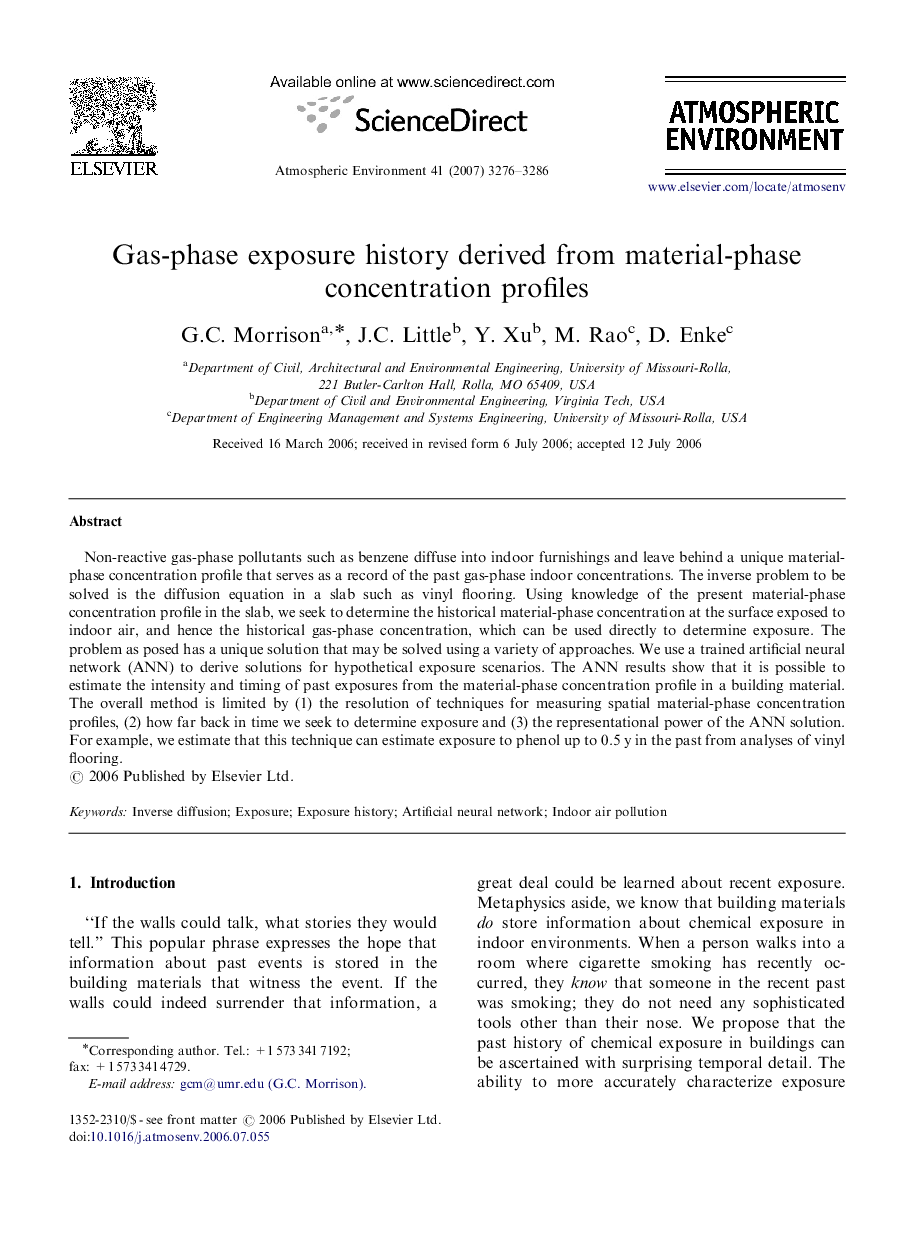| Article ID | Journal | Published Year | Pages | File Type |
|---|---|---|---|---|
| 4442822 | Atmospheric Environment | 2007 | 11 Pages |
Non-reactive gas-phase pollutants such as benzene diffuse into indoor furnishings and leave behind a unique material-phase concentration profile that serves as a record of the past gas-phase indoor concentrations. The inverse problem to be solved is the diffusion equation in a slab such as vinyl flooring. Using knowledge of the present material-phase concentration profile in the slab, we seek to determine the historical material-phase concentration at the surface exposed to indoor air, and hence the historical gas-phase concentration, which can be used directly to determine exposure. The problem as posed has a unique solution that may be solved using a variety of approaches. We use a trained artificial neural network (ANN) to derive solutions for hypothetical exposure scenarios. The ANN results show that it is possible to estimate the intensity and timing of past exposures from the material-phase concentration profile in a building material. The overall method is limited by (1) the resolution of techniques for measuring spatial material-phase concentration profiles, (2) how far back in time we seek to determine exposure and (3) the representational power of the ANN solution. For example, we estimate that this technique can estimate exposure to phenol up to 0.5 y in the past from analyses of vinyl flooring.
